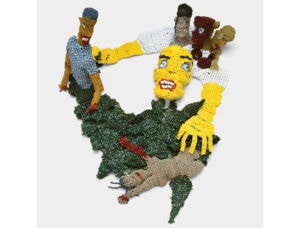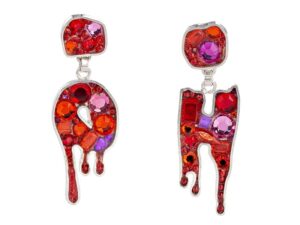
Beauty—Cooper Hewitt Design Triennial
February 12–August 21, 2016
Cooper Hewitt, Smithsonian Design Museum, New York, New York, USA
This, the fifth installment in the Cooper Hewitt’s design series, explores aesthetic innovation through an astonishing variety of objects—250 works by 63 international designers, jewelers included—ranging from multifunctional, hand-crafted furniture to flower images generated by computer code. All are subsumed under the general rubric of beauty, then further grouped within sections (“lenses” through which to view the work, as the curators would have it) evocatively titled “Extravagant,” “Intricate,” “Ethereal,” “Transgressive,” “Transformative,” “Emergent,” and “Elemental.”
You won’t find much in the way of familiar product design in this show (no pencil sharpeners or radios—what are those, after all?!). Rather, objects on view are there to convey potentialities; their functions are more to delight, provoke, and inspire than to display humdrum serviceability, or even style. In fact, if Beauty is any measure, today’s visionary designers are applying criteria to their creations that value aesthetics as highly as functionality. At least that is the message conveyed by curators Andrea Lipps and Ellen Lupton, who have sought to present objects of contemporary design as aesthetic phenomenon. It’s a gutsy undertaking that fearlessly embraces high-low culture so that architecture and typography might be rubbing shoulders with futuristic body sculpture and blazingly manicured nails.
Jewelry, which is featured in four of the seven sections, provides the general viewer with a window into the contemporary art jewelry field where unusual materials, sculptural form, and conceptual design have long held sway. In two previous Cooper Hewitt triennials, jewelry was only minimally represented, considered narrowly as examples of “craft.” In the 2003 show, for example, Ted Muehling was the sole jeweler; his subtle, nature-inspired work was included under the heading “Craft, Authenticity and Entrepreneurial Production.” In 2006, Judy Geib’s bag, made of seashells, was presented as an example of “Hand-Crafted and Do-it-Yourself Design.” But in the museum’s current iteration, jewelry has escaped its pigeonhole to be integrated within the big picture from the point of view of materials, methods, and design philosophy. Not every one of the six individuals selected in the jewelry category are in fact practicing art jewelers. One specializes in extreme millinery (Maiko Takeda). Another is an artist who creates what could be called mytho-prosthetic body sculpture (Ana Rajcevic). And the long-established (since 1895) luxury house Hemmerle lies outside the contemporary art jewelry movement, albeit sharing its aesthetic preoccupations. By integrating these makers within five of the show’s seven categories, the curators have demonstrated the various ways in which jewelry and other forms of wearable ornament participate in the culture and life of design.

In “Extravagant”—aptly described in the catalog as the “domain of glamour, seduction and excess”[1]—an haute couture gown by Giambattista Valli is paired with a case of Hemmerle jewels, setting up an easy stylistic synergy between two fashion icons. The company’s unusual gems combine precious and nonprecious materials in the creation of high-end jewels. Among its most appealing pieces are snail brooches in which real snail shells shelter precious gold and diamond bodies. This high-low mix is analogous in a way to Valli’s concept for a sumptuous tiered gown whose voluminous hand-stitched skirt of dégradé tulle is belted over a tailored pajama top. In stark contrast to these elegant presentations is the dazzling nail art of Naomi Yasuda, whose Deco-esque patterns, decorations, and extensions transform the hand itself into a manicurial—if not manic—living sculpture. Images of makeup by artist Pat McGrath and of extreme coiffures by hair stylist Guido Palau further exemplify extreme artifice, image-making, and ambiguity—all elements inherent in the concept of extravagance.
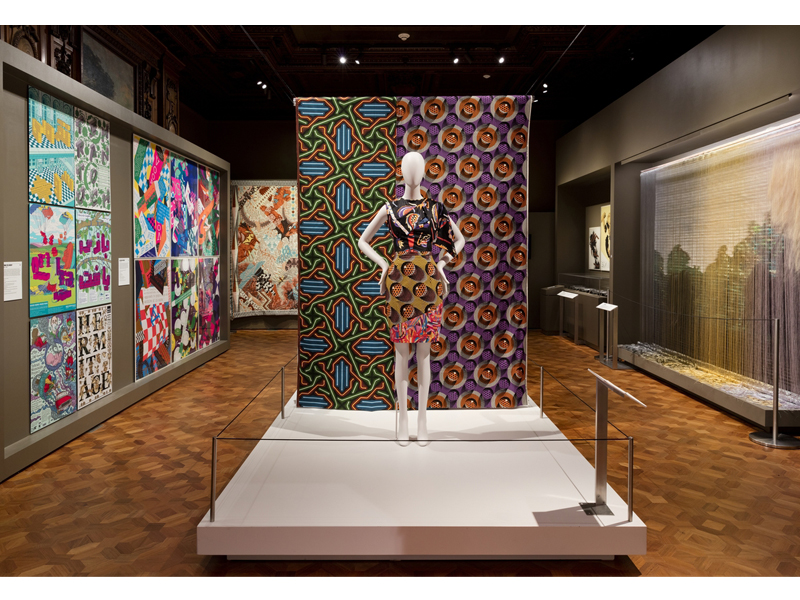
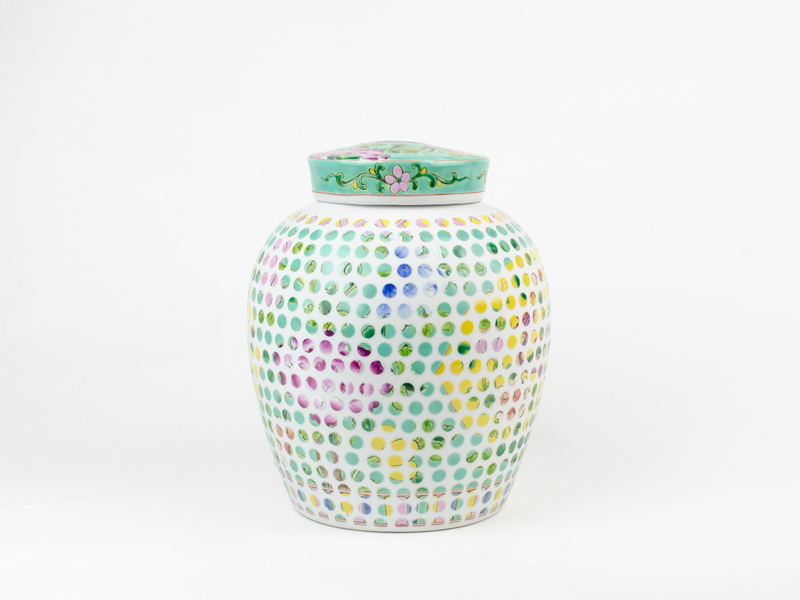
“Intricate,” in the adjoining gallery, is dominated by the neo-modernist fashion designs of Mary Katrantzou, dresses that mix natural and synthetic materials in complex constructions featuring pleats and cut-out piecing over tulle. Also on view is Sandra Backlund’s crocheted cotton body-armor dress, the sandblasted patterned pottery of Hans Tan, and numerous examples of densely patterned prints and textiles. Holding their own amidst this fascinating cacophony are the quietly intriguing pieces of Finnish jeweler Terhi Tolvanen, whose dialogue with the natural world is achieved largely through the use of exotic woods, minerals, and stones, but also polyester, silk, and cement. Is her work in fact “intricate”? Well, by virtue of its multitextural aspect, one could say so, but Tolvanen’s presence in this category reveals the difficulty in assigning labels to works of essentially quiet, mysterious beauty achieved, in this case, through techniques of carving and assemblage. She could as easily have been included in “Transformative,” a section in which “beauty mutates, shifts, and erases its own certainties.” [2] Here the curators gathered examples of fashion, carved and cast furniture, movie titles, print media, recycled plastics, environmentally responsive leather (colored with wind-reactive inks), and color-spectrum porcelains, all of which accurately fulfill the category’s title. The German jeweler Jantje Fleischhut works in silver, sponge, resin, foam, aluminum, and found plastic to make what is perhaps the show’s most unusual and, yes, transformative jewelry from the world’s most common materials. Her work resonates most strongly with that of Brunno Jahara, who creates colorful, translucent tiered bowls, vases, and hanging lights from barely used recycled plastic containers.
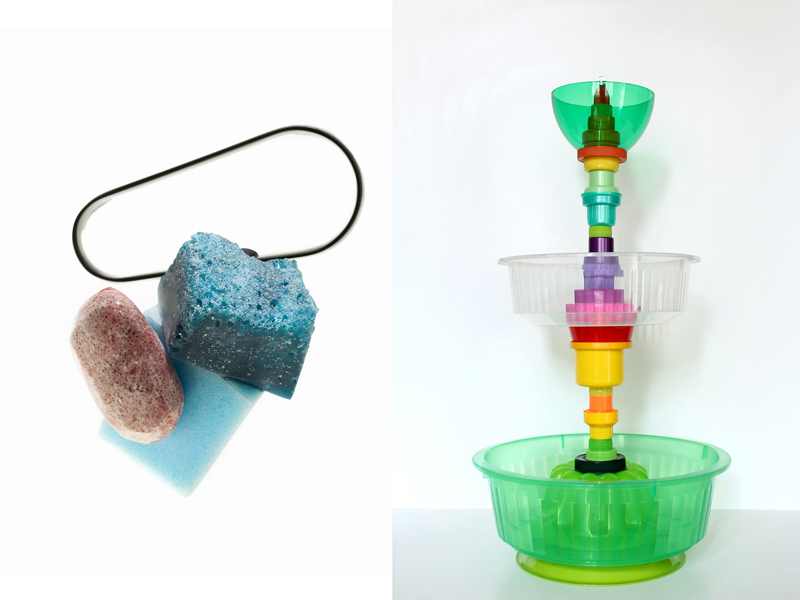
While these transformative pieces maintain a self-possessed inner beauty, the objects selected for the “Transgressive” section project outward in an effort to challenge—annihilate might be a better word—conventional views of beauty, ornament, and, once again, fashion. In the latter category, surreal creations by two designers deliver shock and awe by way of materials and construction method: Gareth Pugh’s radical ensembles are made from shredded black plastic trash bags and black drinking straws, while Iris van Herpen with Jólan van der Wiel’s couture dress—a black, strapless, cage-like structure titled Wilderness Embodied—is made of resin and iron filings. (Working solo, van der Wiel uses a tool called a gravity machine with which to construct magnetic clothing and objects, such as a stool, and, with van Herpen, shoes that resemble globs of tar being pulled off a wall.) One can easily imagine such clothing accessorized with the huge projecting body sculptures, apparently molded or 3D printed, made by Ana Rajcevic of polyurethane, fiberglass, and rubber. Meant to be worn—like Paleolithic curving horns or giant clavicles—or viewed as sculpture, these pieces are from Rajcevic’s series Animal: The Other Side of Evolution. They suggest both formal mutations and the outward projection of inner states of consciousness. (I would like to have seen Rajcevic’s work paired with jeweler-turned-milliner Maiko Takeda’s bristling acrylic head ornaments, featured in the “Ethereal” section.)

By definition, to transgress means to break a law or to go beyond a limit, and this is what occurs in the hands of jeweler Noa Zilberman, whose project could be interpreted as a literal affront to anxiety over fear of aging. Zilberman, who denies such intent, produces intense discomposure in the viewer by means of bits of gold wire affixed to a youthful face and cleavage to approximate where wrinkles will inevitably form. Not surprisingly, as Zilberman revealed in her catalog interview [3], family and friends were disturbed by what she considered to be beautiful, a comment on the subjectivity embedded in the show’s theme. This issue does not arise with the jewelry of Delfina Delettrez, which is rendered in gold and gemstones and in normal wearable scale. Although this fourth-generation member of the Fendi fashion family often quotes surreal iconography, e.g. Dali-esque lips and eyes in a single earring composed of disembodied facial features, Delettrez’s aim is more to explore new forms—the ear cuff, or the septum ring, for example—and ways of wearing jewelry than to transgress cultural norms via her delicate creations. As a result, her work is the least transgressive in relation to the items in this section.
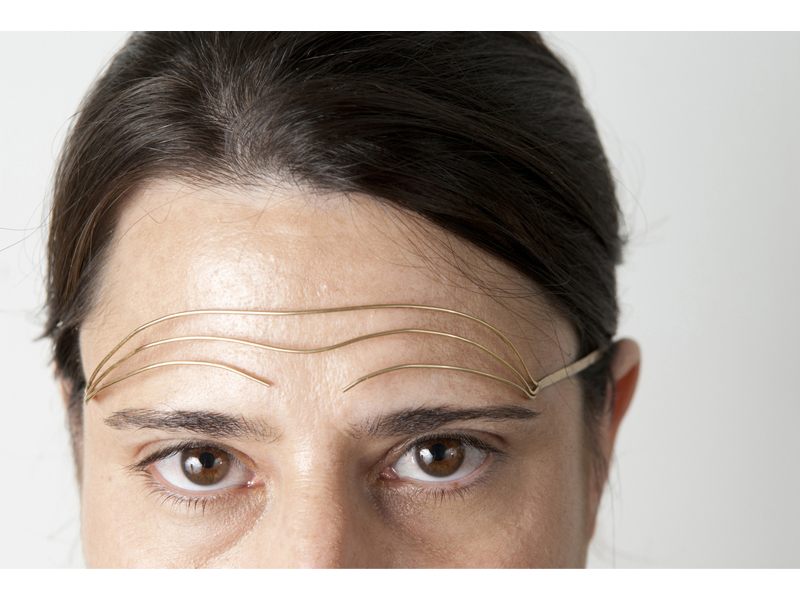
In looking at Beauty through the lens of jewelry, as I could not help doing in viewing the exhibition, it struck me that numerous objects not defined as such nevertheless expressed a distinct jewelry sensibility. Featured in the “Elemental” section, the lighting designer Michael Anastassiades was singled out by the curators for his Fairest (2015) collection, “a series of polished brass globes affixed to a wall almost like jewelry.” [4] These were not on view, but the lamps that were—blown glass opaline spheres poised like moons on dark steel rods—similarly evoke the timeless beauty of pearls and gold. In the “Emergent” section, Neri Oxman presented GLASS, a collection of illuminated glass sculptures created with 3D printing technology. Unfortunately not pictured in the catalog, these exquisite objects, each just a bit larger than a bangle bracelet, and each of a slightly different form and pattern, were mesmerizing to behold and alluring to imagine on the arm. The most bizarre example of a jewelry sensibility may be the fantastical beaded sculptures created by The Haas Brothers in collaboration with The Haas Sisters, women from South African townships. Huge, comical imaginary beings, the Haas Afreaks collection, as they are called—included in the “Transgressive” section—represents a tour de force of beading as virtually every inch of every creature is covered in glass beads over a wood and cast bronze armature. It is as if these splendid kooky spirits of beading—jewelry’s DNA, after all—had materialized in self-celebration of their ornamental prowess.
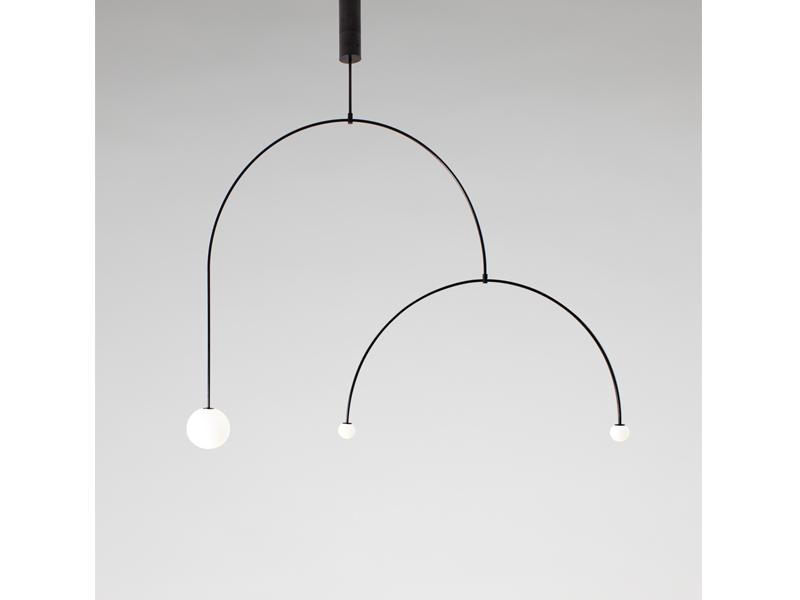
In the foreword to the catalog, Caroline Baumann, director of the Cooper Hewitt museum, states that “aesthetic innovation can drive change, whether materially, structurally, or ethically.” [5] This view is expanded in the preface by the curators, who affirm that beauty “confronts us intellectually and sensually,” [6] a position that certainly dictated their choice of objects, each of which, in one way or another, responds to cultural, technological, and humanistic evolution. Jewelry, as presented, effortlessly partakes of this discourse. Beauty may in fact be a unique instance in which a museum mixes jewelry with other practices, a welcome occurrence that lends credibility to the field while revealing the basic affinity between ornament and design, especially when the latter melds function with the far side of beauty. In walking through the show, I found myself mentally re-curating Beauty, inserting jewelry artists here and there whose works should have, or could have, been perfectly at home in any and all categories. I also found myself wondering why there has not yet been an art jewelry triennial anywhere in the world, for a field so rich in radical design and that for decades has been turning traditional concepts of beauty inside out. Perhaps you are thinking, “What about Schmuck, held every year in, um, Munich, Germany?” Important as this annual event is to makers, gallerists, critics, and collectors alike, it remains a Eurocentric phenomenon lacking the gravitas that only a museum venue can bestow. So, any takers?
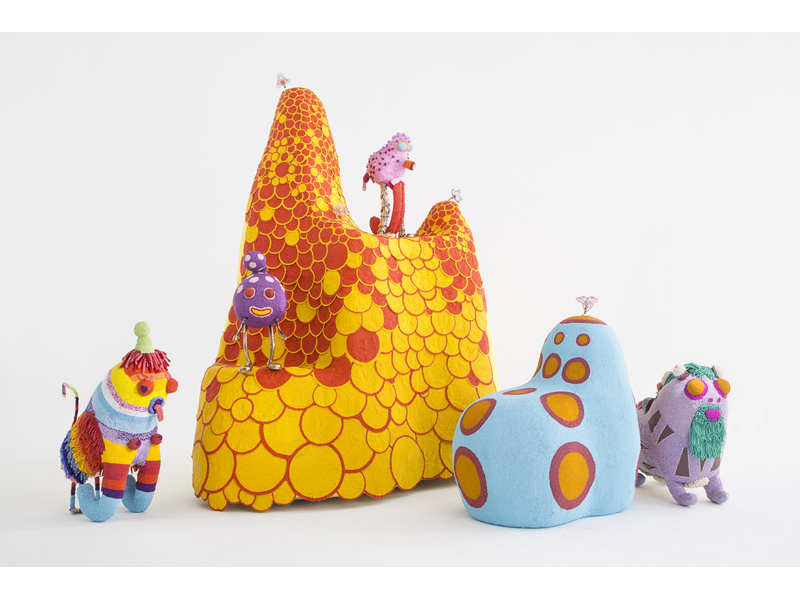
INDEX IMAGE: Naomi Yasuda, Black and White Graph, 2015, gel, photo: artist

